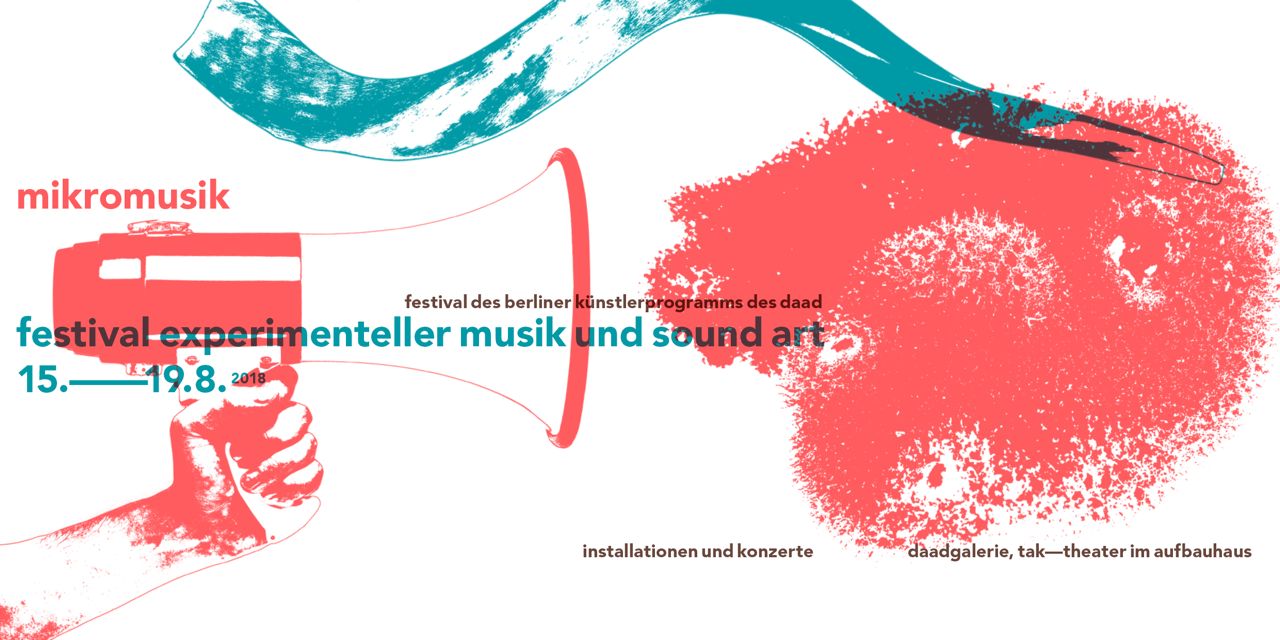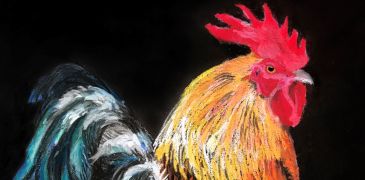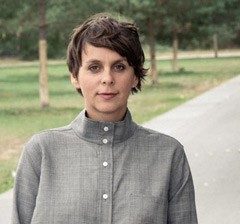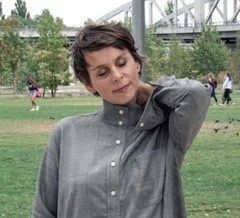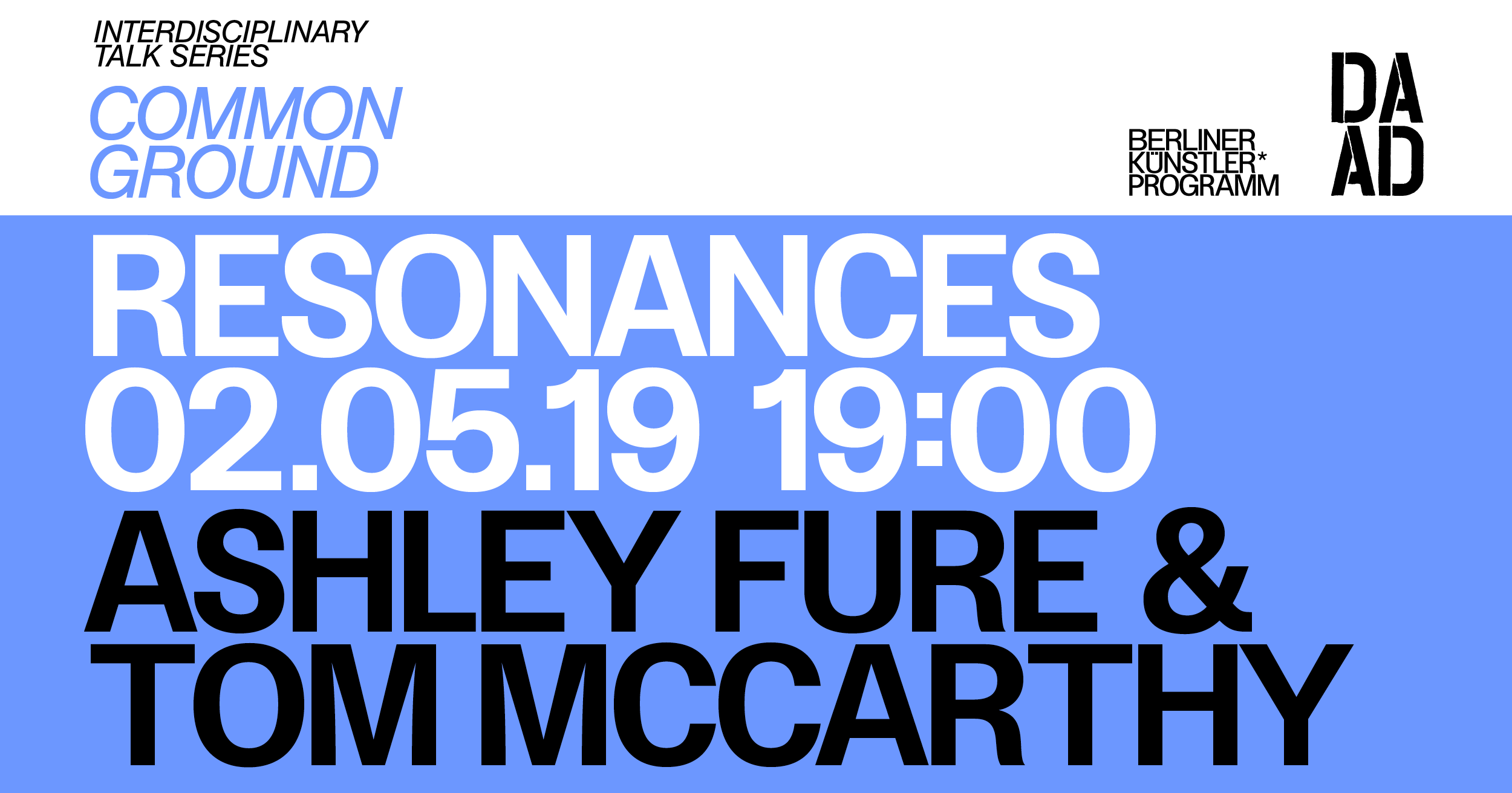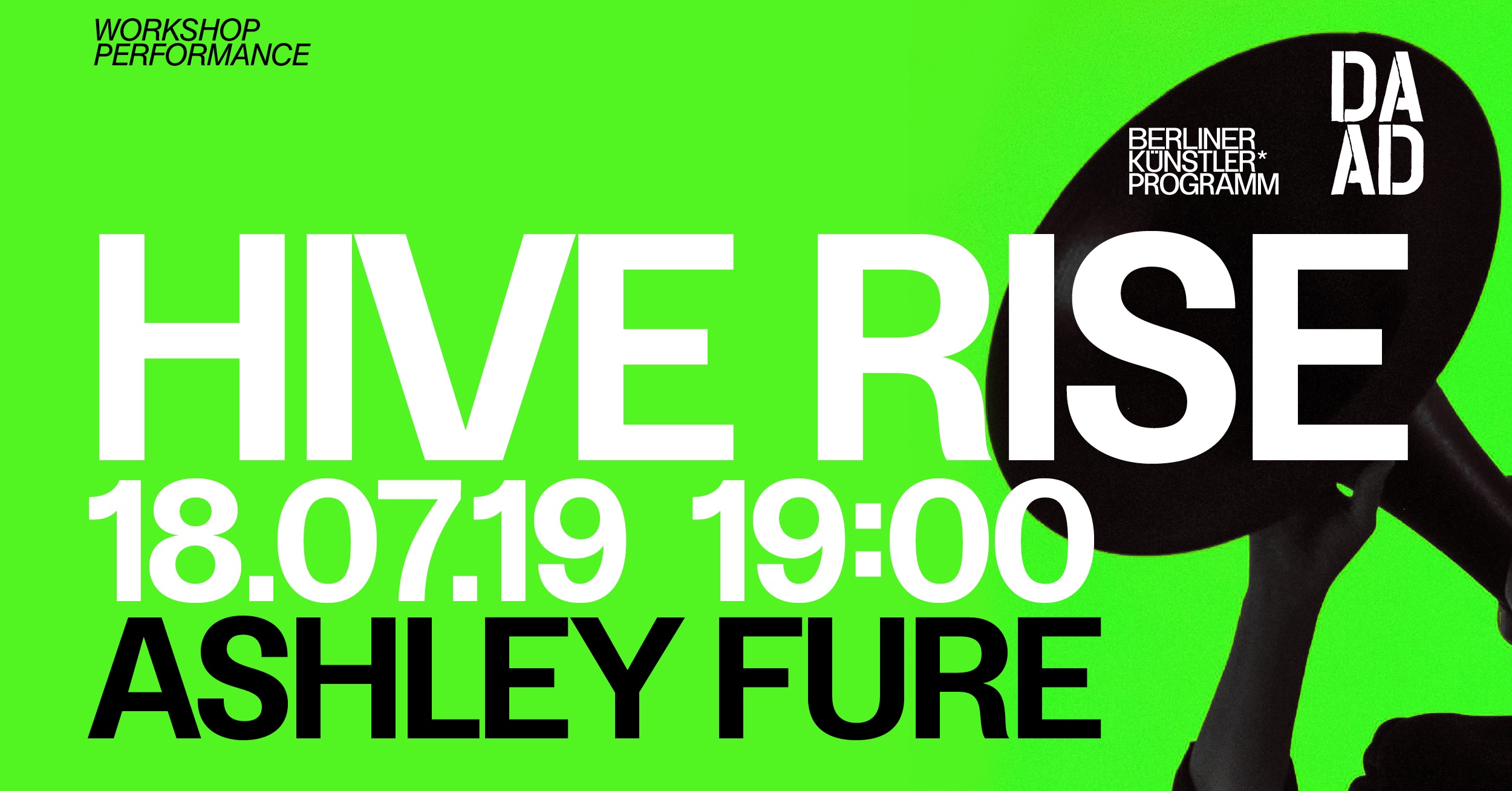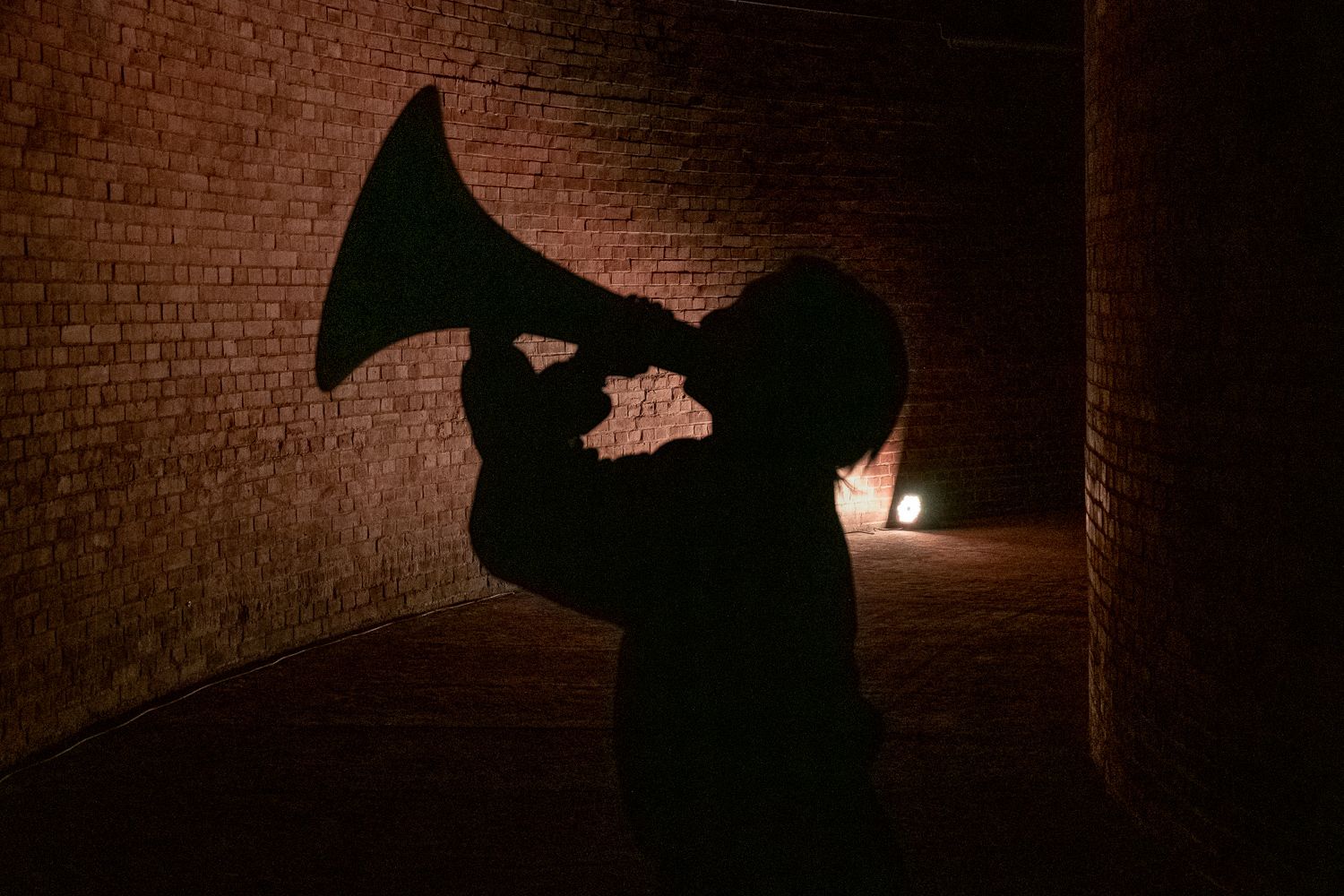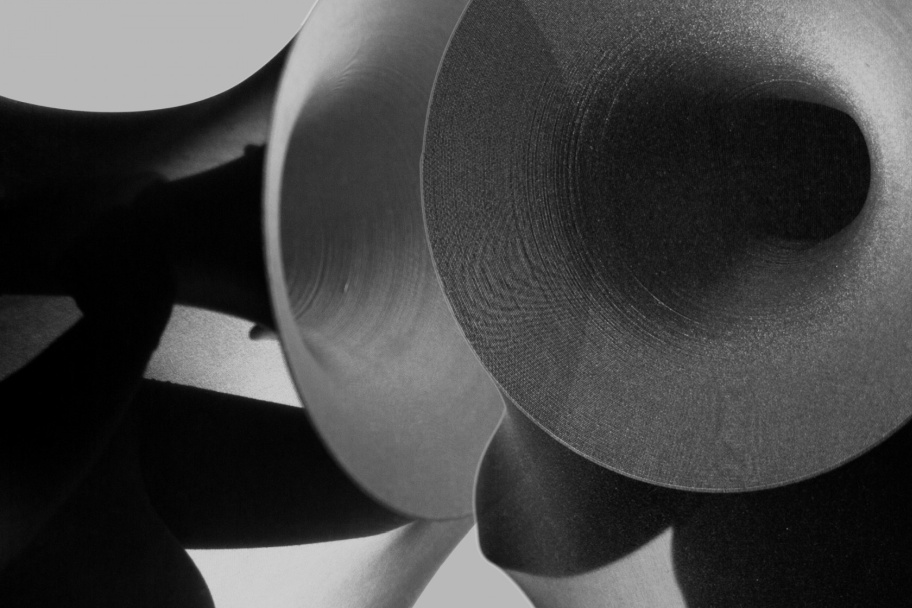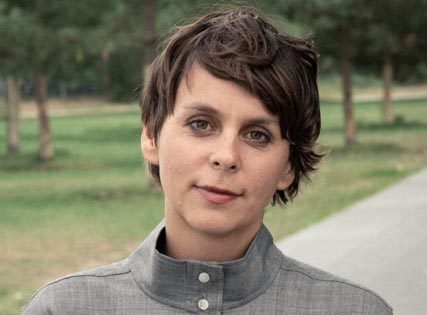USA, Music, 2018
Ashley
Fure
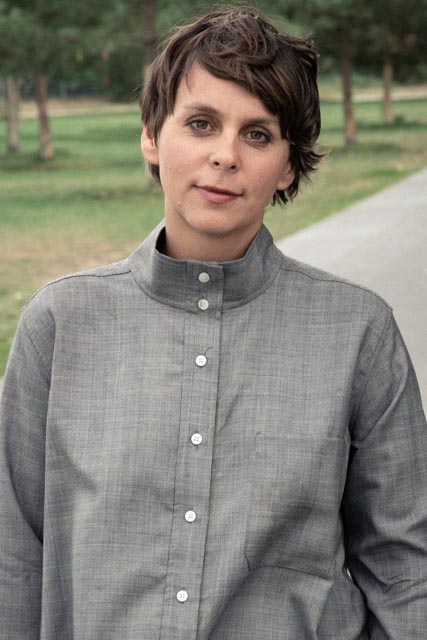
Dimensionality of Sound
The unmediated power and rawness of sounds, acoustic interferences, and the performative act characterize the works of Ashley Fure. By condensing and deconstructing complex sound relationships, which more often than not break down, the American composer creates musical dynamics. Movement, plasticity, and immersive instances permeate a spectrum of works ranging from electronically enhanced solos (“Wire & Wool”, for cello and live electronics, 2009) to ensemble / orchestral works (Cyan, for orchestra, 2009), to installations and music theater formats (“The Force of Things”, 2016).
Ashley Fure draws on her curiosity and an analytical approach in dissecting material into discrete elements. Once exposed, these particles then begin to form amorphous shapes when elongated or distorted (“Feed Forward”, 2015)—spectra are colored or interlaced, and structures slide smoothly between different densities. The fluctuation between material and form, between stasis and uninterrupted sonic flows, makes perceptible the kinetic energies of sound and sound layers (“Bound to the Bow”, 2016). Here, the composer scours the outer limits of instrumental possibilities for both finely chiseled as well as powerful sounds: as in “Something to Hunt”, for septet (2014), for instance, which demands from the contrabass player alone a spectrum of sounds ranging from propeller-esque vibrations of the air to rhythms aggressively pounded out on the fingerboard. The sound produced is sculptural and almost seems tangible.
This dimensionality is felt all over the body and is extended to other sensory levels in multi-media installations (“Veer and Hover”, 2012). In their acoustic gestures, the installations are related to the instrumental works. But they not only augment the acoustic dimension with a specially designed environment, they also offer sensor-controlled interactive spaces. Here, materials such as cotton or latex create forms that are a mix of organic growth and artistic construction, and also incorporate the form-generative, kinetic energies of the audience. In this way, “The Force of Things”, as an immersive work of music theater, comes across just like a consistent extension. Material, regardless whether acoustic, visual, or sculptural, serves as an actor. In addition to straightforward couplings of visual and acoustic levels, space-defining elements such as paper surfaces or wire cables serve as sound generators. This leads to a dynamic interplay between human and non-human, organic and inorganic actors. Each action sets the physical environment in vibration and forms a kind of “audience-surrounding hyperobject.”
Ashley Fure continuously strives to locate the power and immediacy of sound material. From the interplay of delicate, fragile sounds and powerful sonic massings on the one hand, and distinctly nuanced stratifications or interlacings of sound spectra on the other, the composer designs both acoustic and sculptural gestures for viewers to explore and, as the case may be, also help shape.
Text: Fabian Czolbe
Translation: Erik Smith


